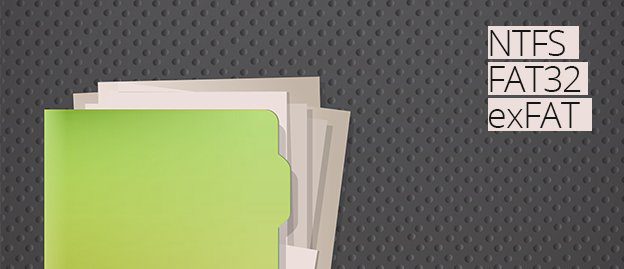
As you probably already know, there are three different file systems that operate through Windows. The oldest is FAT32, followed by NTFS and the newest of the trio, exFAT. We are not going to explain what each file system is, assuming you already know what they are. What we are going to look at here is the specific applications of each file system. In other words, which one would you use and in what type of setting will they fit best.
Is exFAT Good For Home Based Computer?
Let’s assume you are an average Joe. You have a fairly current computer system that you use at home. Your logical choice of a file system would most likely be exFAT. Let us explain. Known formally as Extended File Allocation Table, exFAT is pretty much as the name implies. With extended allocation space, you have no limits related to the size of a file that you intend to transfer nor are you limited to use just Windows or OSX-based devices. In other words, with no limits on file and partition sizes, you can easily store files that top the 4GB size. Also, since exFAT is already optimized for use on flash drives, it is essentially a lightweight file system. As a result, if you choose to format a backup drive to use exFAT, you could connect and transfer files with no problem between Windows and OSX machines.
What About NTFS?
Commercial operations will likely include Windows, a smattering of OSX machines and a high probability of Linux based devices. You could use exFAT between all three, but you are might hit some roadblocks related to licensing. These will crop up when your plan expands to format phones, mobile devices, networks, and PCs. When you get to that place, license fees will kick in and will be governed by the volume of traffic that flows through them. If you get a bit twitchy at the thought of a possible lawsuit, you may want to shy away from exFAT systems. You could get away with NTFS which has the major perk of being license-free but cross-platform compatibility is going to be a problem. In other words, if you decide to transfer some files between Windows-based and OSX-based operating systems, you will have a problem. You can install an application like MacDrive and it will let you read and write files from OSX formatted drives, but applications of that caliber are not free, so be prepared to cover some costs.
Would FAT32 Do The Job?
We haven’t mentioned FAT32 yet, have we? Because it happens to be the oldest of the three file systems it also has a lot of limitations. First and foremost is size. For example, file transfer sizes and partition sizes are severely limited. When size matters, you will want to use something far less outdated than FAT32 even though the formatting still is used with many thumb drives in today’s market. In fact, anything you use in a commercial setting that is formatted in FAT32 should probably be reformatted to either NTFS or exFAT. The main reason is the lack of limitation with this format. In a commercial application, you may need to download a video that happens to be in excess of 4GB in size. Oh, and if that movie happens to be in HD expect the file to be massive. We’re talking in the 60GB range. FAT32 is instantly out of the race when files of that size are being transferred. You have to remember that as technology moves forward, files are going to get bigger and bigger.
In Conclusion
If you have a device you are rather fond of that still uses FAT32, don’t throw it away. You could just place it somewhere special and consider it a collector’s item like the fax machine you have sitting on another shelf. The other side of the coin is observational. When you look at the differences from FAT32 to exFAT and then from exFAT to NTFS you can get a real sense of the speed of technological change. It also means that you have been part of that wave of technology. Fortunately, with newer file systems being created, you can stay connected to the technology without falling behind because of the swift changes that have been made.
